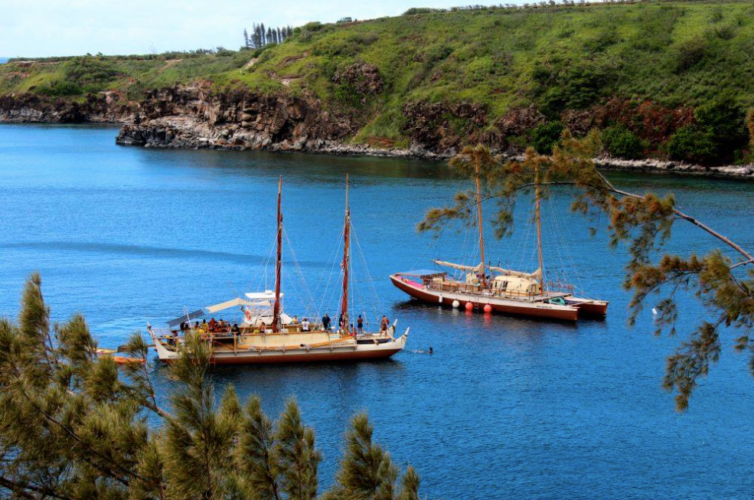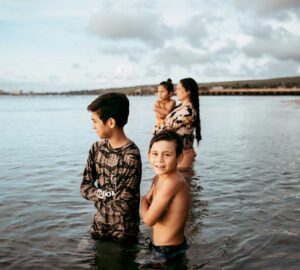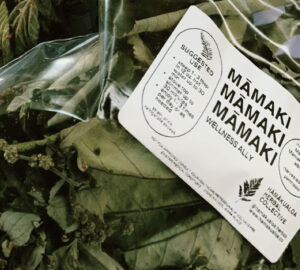On August 16, 2017, voyaging canoes Hōkūleʻa and Hikianalia will depart the Marine Education Training Center (METC) at Sand Island to begin the Mahalo, Hawai’i Sail. The first stop will be at Honolua Bay, Maui, where Hōkūleʻa first launched for her maiden voyage in 1976 and where she will now begin to mahalo and mālama Hawai’i with a planting of 4,000 koa seedlings as part of a series of events in West Maui. After the Honolua Bay visit, the canoes will continue to approximately 40 additional ports and connect with nearly 80 communities throughout the Hawaiian Islands.
The Mahalo, Hawai’i Sail will give Polynesian Voyaging Society (PVS) an opportunity to thank Hawaiʻi’s people, bring Hōkūleʻa and Hikianalia home to all of Hawaiʻi, share lessons learned from the Mālama Honua Worldwide Voyage and deepen the organization’s connection and understanding of the important work being done here in the islands to care for the earth. During the port visits, PVS will engage with schools and organizations through outreach events, service projects, crew presentations and canoe tours.
“Now that we have returned from our three-year voyage around the world, we are looking forward to reconnecting with and thanking the people of Hawai’i,” said Nainoa Thompson, president of PVS. “It’s also time now to discover and shine the light on what people and organizations are doing to turn inspiration into action for the betterment of our island home and the earth. This first engagement planned at Honolua Bay and Waokele ʻo Honolua by the West Maui community is an example of what we are hoping to support during this sail,” he added.
Honolua Bay was chosen as the first stop on the Mahalo, Hawai’i Sail because it was the location where the Hōkūleʻa’s maiden voyage to Tahiti was launched in 1976. In partnership with the Maui Land and Pineapple Company, Inc. through the conservation department of the Pu’u Kukui Watershed Preserve, State of Hawaiʻi DLNR, The Nature Conservancy of Hawaiʻi and Kamehameha Schools Maui, Hōkūleʻa and Hikianalia crew members will be engaging with schools and the community in West Maui where they are scheduled to conduct presentations and canoe tours (see detailed schedule below). On Saturday, August 19, crew members will join the community and participate in a project to plant 4,000 koa trees and thousands of other native plants in the Pu’u Kukui Watershed Preserve ma kai conservation area. At one time, koa trees were used to make voyaging canoes, but today there are few of these native trees remaining which are large enough to do so.
Honolua Bay Engagement Schedule:
*All dates and times schedule to change
- Wednesday, August 16, 11 p.m. – Hōkūleʻa and Hikianalia depart METC at Sand Island
- Thursday, August 17, 4 p.m. – Hōkūleʻa and Hikianalia arrive at Honolua Bay
- Thursday, August 17, 6 p.m. – Mālama Honua Voyage sharing by crew members of Hōkūleʻa and Hikianalia at Kamehameha Schools Maui, Keōpūolani Hale (Free and Open to the public)
- Friday, August 18, 9:30 – 12:30 p.m. – Kamehameha Schools Maui visit with Hōkūleʻa crew and planting
- Saturday, August 19, 8 a.m. to 1 p.m. – Planting of 4,000 koa trees and thousands of other native plants at Pu’u Kukui Watershed Preserve ma kai conservation area (limited parking available)
- Saturday, August 19, 2 p.m. to 5 p.m. – Public canoe tours, Honolua Bay Ramp
- Sunday, August 20, 8 a.m. to 5 p.m. – Public canoe tours, Honolua Bay Ramp
TBD– Hōkūleʻa and Hikianalia depart Honolua Bay
About Pu’u Kukui Watershed Preserve:
Pu’u Kukui Watershed Preserve is the largest private nature preserve in the state of Hawaiʻi. Extending across more than 9,000 acres from ma uka to ma kai of Mauna Kahālāwai on Mauiʻs West side, it is home to some of the rarest endangered flora and fauna in the islands. This pristine area is a vital water source for Mauiʻs community and one of the wettest spots on earth. Most recently, under new management, the ancestral wisdom of Hawaiian elders has been laid as the foundation for conservation efforts in the preserve; providing a culturally sensitive and informed approach to managing the thriving native ecosystem of Puʻu Kukui. Conservation endeavors include non-native invasive species control, weed control, monitoring, research and most importantly protecting rare species.




